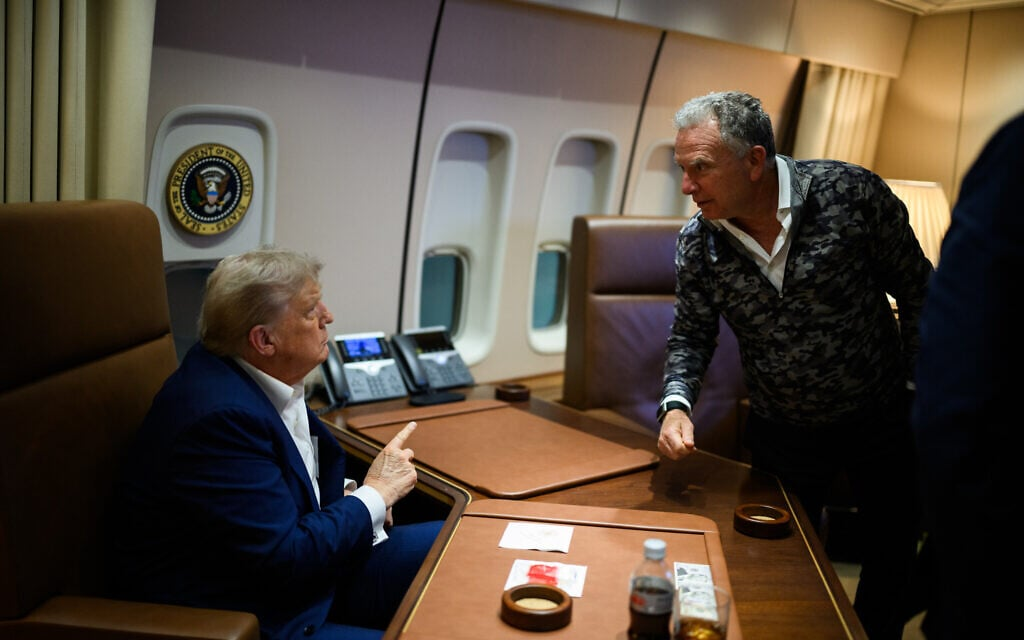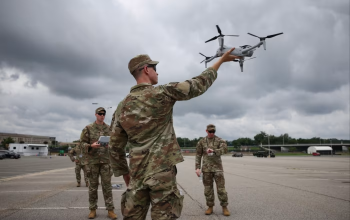US President Donald Trump is later Wednesday set to hold a major White House meeting to discuss the “comprehensive plan” his administration is preparing for postwar Gaza, his special envoy for the Middle East Steve Witkoff announced on Tuesday.
The announcement came as rather a surprise — since it was not previously clear that the US had been working on a detailed postwar Gaza program — but a potentially vital and welcome one.
Until recently, the focus of Israeli, American, Egyptian and Qatari efforts had been on reaching another phased deal with Hamas — providing for the release of perhaps half the 20 living hostages for large numbers of Palestinian security prisoners during a temporary truce, and subsequent negotiations on the terms for the release of all the remaining hostages and an end to the war. The previous such deal, finalized in January, was essentially abrogated by Israel in March, after the first phase of hostages and Palestinian security prisoner releases had been completed, because Prime Minister Benjamin Netanyahu was not prepared to move into the subsequent phases of talks on an end to the war within that framework.
Witkoff delivered an updated phased proposal, broadly approved by Israel, to Hamas at the end of May. But Hamas balked, added new conditions, and, Witkoff charged last month, “slow played the process.” By the time Hamas on August 18 declared that it now accepted the latest Witkoff terms, Netanyahu was deep into preparations for an expanded Gaza war operation, starting with the conquest of Gaza City, and was ruling out any further phased agreements. He is instead demanding a “comprehensive” deal under which all the hostages would be released at once, and the war would come to an end in line with five core principles, including the disarming of Hamas, the demilitarization of Gaza, and the establishment of Gaza governance by non-Hamas, non-Palestinian Authority “Arab forces.”
The problem with achieving such essential objectives as the disarming of Hamas, demilitarization of Gaza and the establishment of a non-Hamas authority to govern Gaza is that these terms self-evidently can never be successfully negotiated with Hamas. A terrorist government whose paramount goal is the destruction of Israel, at any cost to the Palestinian people it claims to represent, will never willingly collude in its own demise.
And that’s why news that the Trump administration has been working on a “comprehensive plan” for postwar Gaza is overdue and, potentially, encouraging.
Netanyahu says he won’t end the war until all the hostages are returned and Hamas is destroyed. But Hamas will not free all the hostages unless it can guarantee its survival. Regional players that have normalized ties with Israel will not take key roles in bringing stability and reconstruction to postwar Gaza unless they are overseeing some form of ostensibly legitimate, non-Hamas Palestinian civil governance. But Netanyahu is adamant that the PA can play no governance role.
Under pressure from Trump to end the war as soon as possible, the prime minister may be hoping to achieve some form of his promised “total victory” in Gaza City. And then, if a mechanism can be brokered by the US, to prepare the ground for his declared intended handover to those unspecified “Arab forces.”
Sending the IDF smashing into Gaza City is fraught with immense risk. Families of most of the hostages — wary of soldiers blundering into areas where their loved ones are held, and mindful of Hamas orders to the captors to kill them if the IDF approaches — are terrified that the operation amounts to a death sentence. Furthermore, Hamas, however greatly weakened, has doubtless been preparing the most deadly welcome it can achieve for the incoming IDF.
Much of what will unfold may depend on how successful the IDF proves in compelling the evacuation of Gaza City noncombatants, as it managed in Rafah last year — or how successful Hamas proves in compelling those civilians to stay put as human shields.
The still under-investigation incident of tank fire at Nasser Hospital — where the deaths of journalists and rescue workers at a Hamas-controlled hospital put another nail in the coffin of Israel’s international legitimacy — is only a small precursor of the battlefield nightmare, and the public diplomacy disaster, that awaits the IDF if it enters a Gaza City still heavily populated with civilians.
Netanyahu has resisted numerous potential opportunities for deals leading to an end to the war in part because he has argued that Israel would not be allowed by the international community to resume the fight against Hamas when the terror group would inevitably breach any permanent ceasefire terms. Ironically, the rising international horror at the costs of the war for Gazans means that where Israel, until relatively recently, would have had at least a modicum of support for resuming the battle against the terror group that perpetrated the October 7 massacre, today there is almost no backing, anywhere, for continued Israeli fighting now or resumed Israeli fighting against a reviving, post-ceasefire Hamas.




